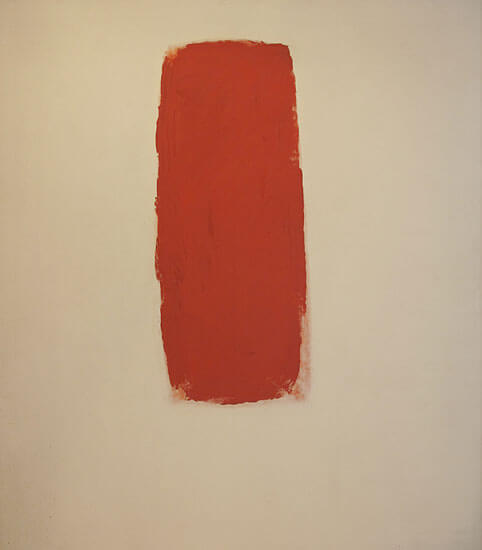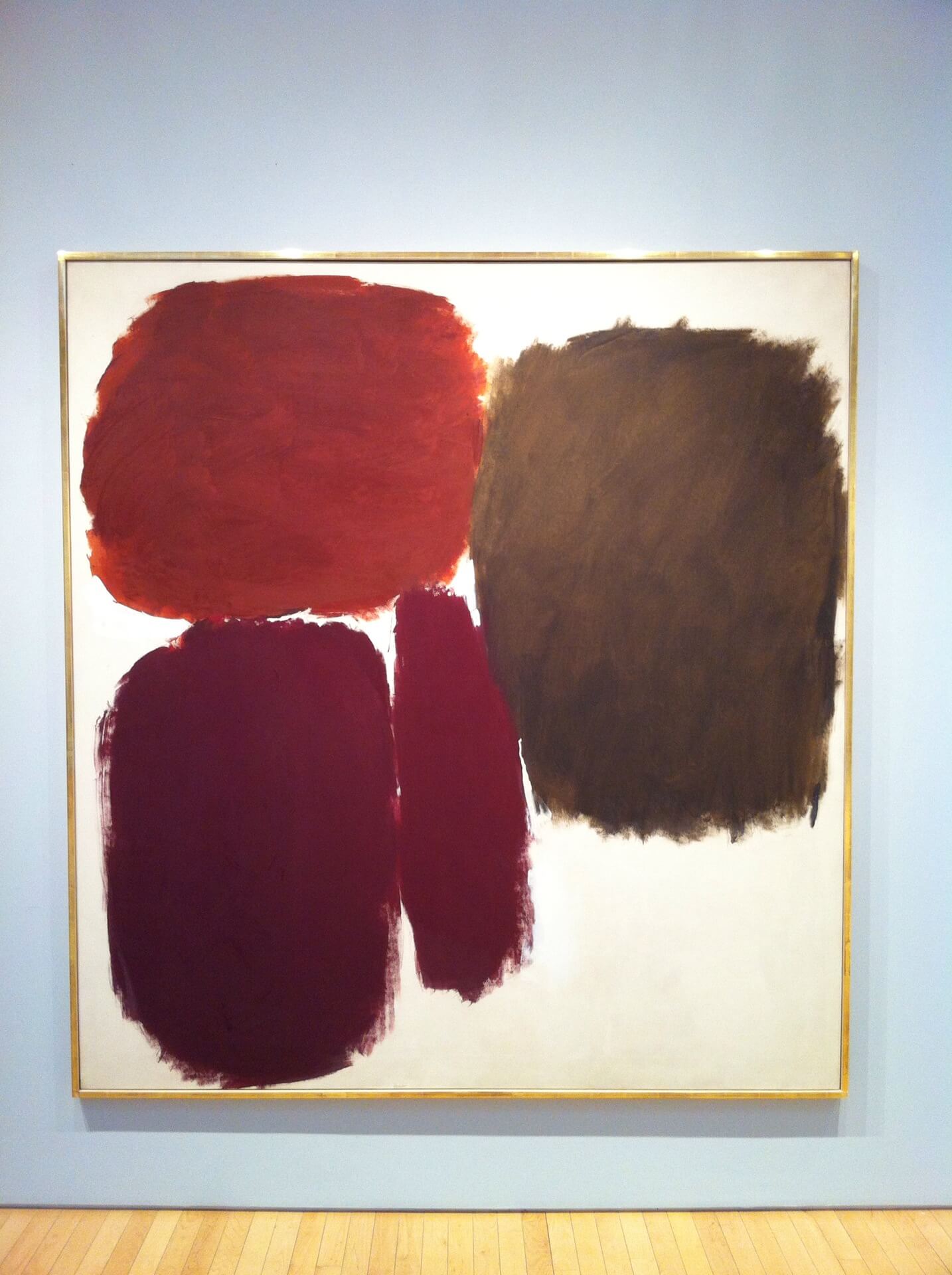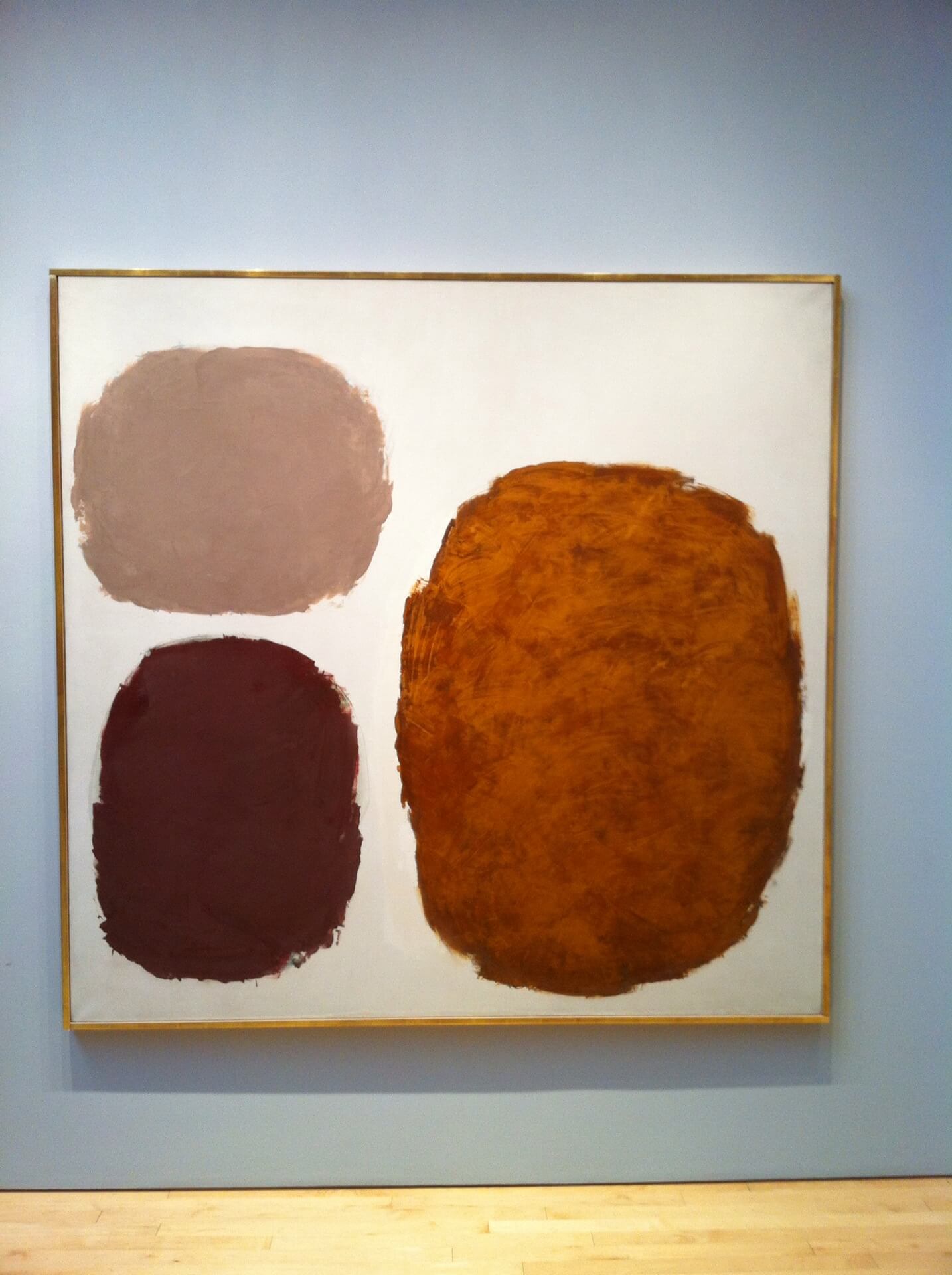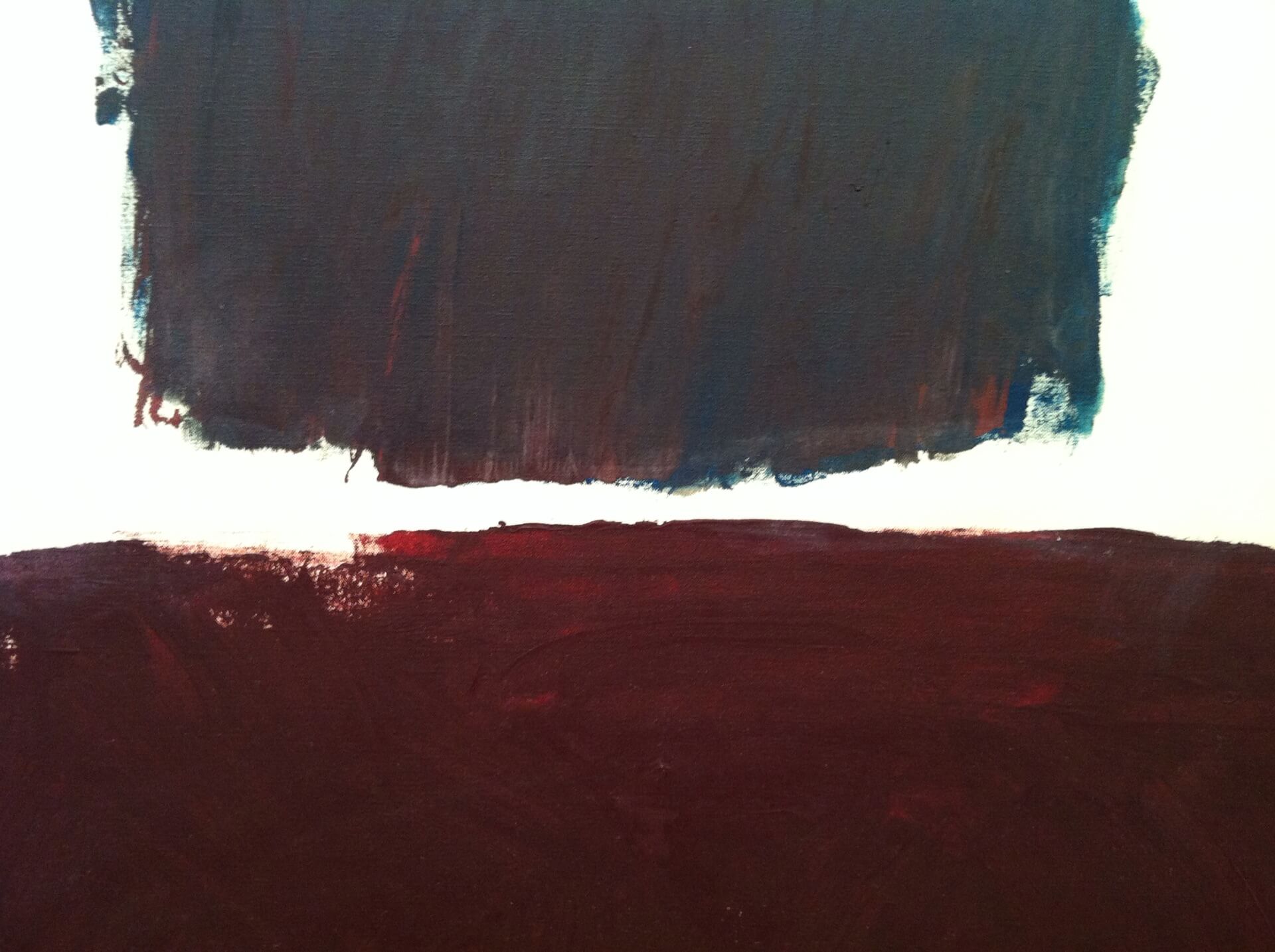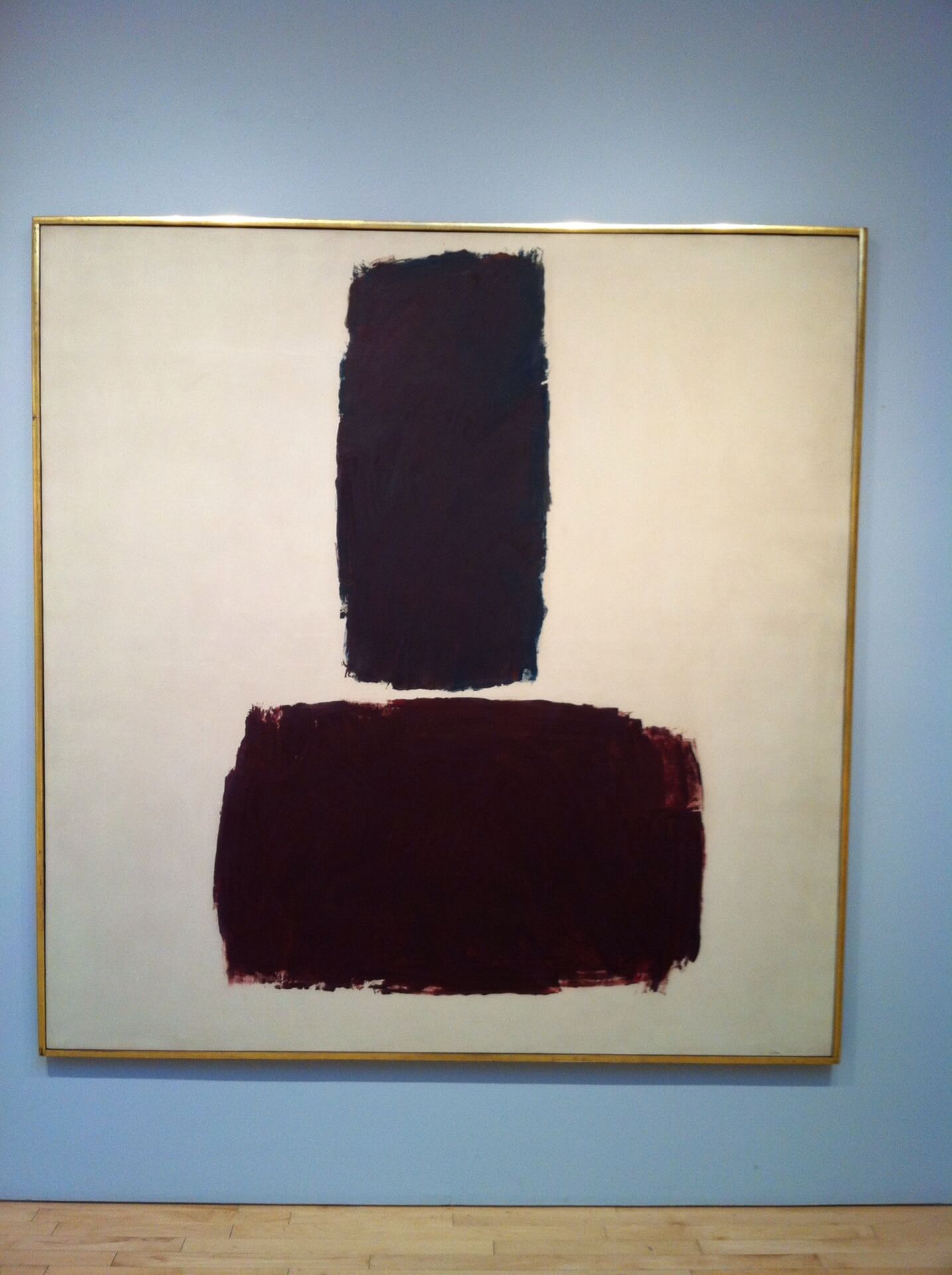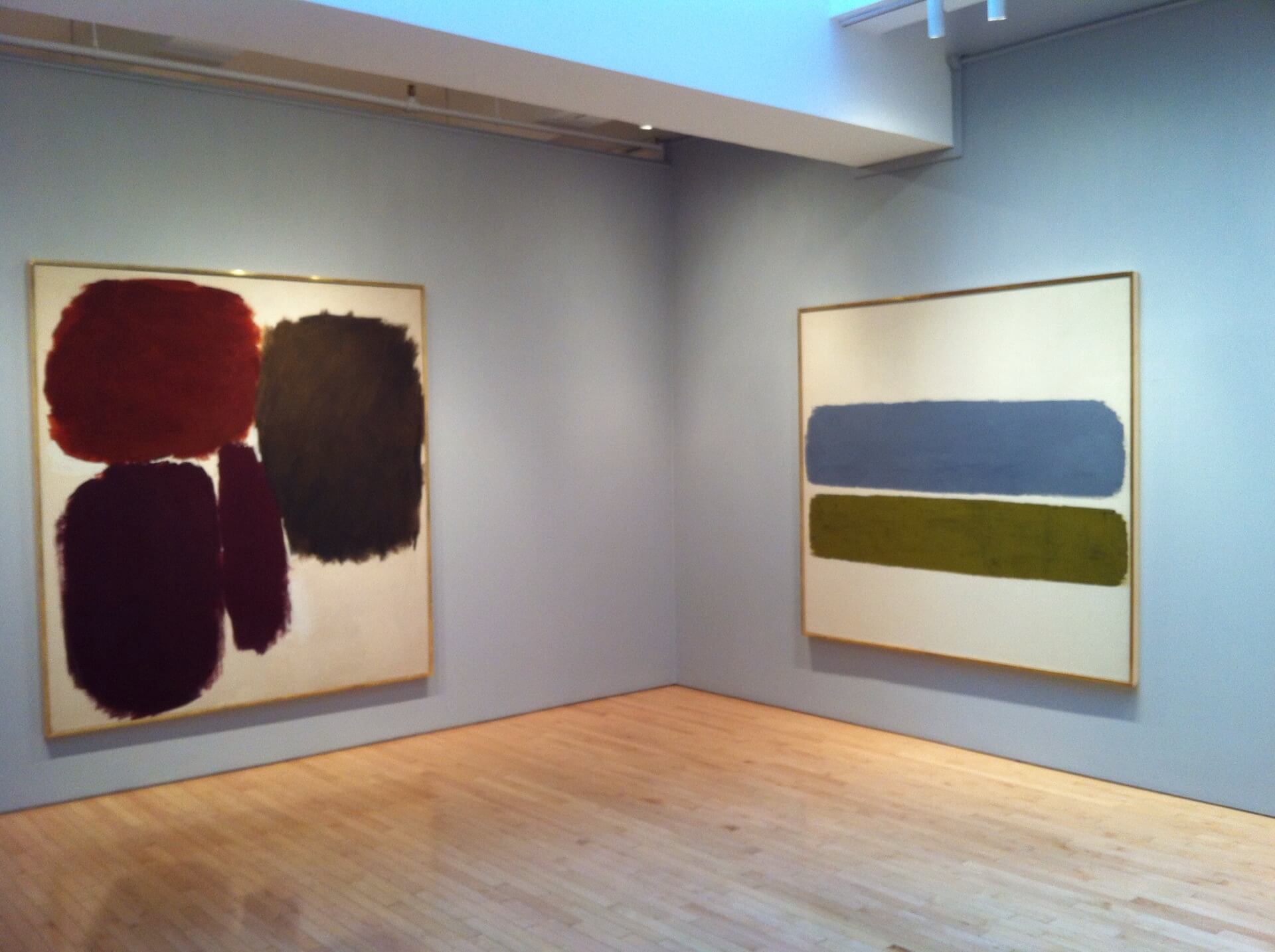Ray Parker, Simple Paintings from the 1960s
Washburn Gallery, New York
January 5, 2012 – January 28, 2012
Ray Parker’s “Simple Paintings” from the 1960s, on view at Washburn Gallery, are loosely brushed but clearly defined forms on off-white grounds that give the curious impression they are observations painted from life even though they are abstract expressionist works through and through.
Parker used “rags to apply the paint, allowing the color to spread to its ‘fullness of volume'” and he let the rag “respond to the pressure of his hand, recording the nuances of touch and feeling, change and movement, like a psychic seismograph.” 1 This subtle vacillation creates an attitude of suspension that fulfills Parker’s stated mission to create forms that are “quiescent, bound by the gravity that makes bodies in orbit hang in a stillness where the slowest movement marks the space from one to another.” 2< Although process dominates the work, Parker's paintings seem to long for the natural world. The accretions of color feel as if they want to become objects. They hover near observation, approach recognition, then quickly recede again into 'pure' abstraction. Recalling the most synthetist works of Vuillard, the upright form in Parker's Untitled 1962 resembles a mirror but never becomes one. They are open “to the notions of reverie and suggestion” but lack an implied narrative – the kind that animates Philip Guston’s black and gray abstractions, for example. 3 Three paintings in the show, all Untitled from 1959, 1961, and 1962, could be forms lying on a table, shadows of objects unseen, or galaxies forming and dissolving. They speak, perhaps, to a poetic, universal scale, dependent only on one’s point of view.
Parker’s impulses align closely with Barnett Newman, Clyfford Still, and Jackson Pollock who each sought to harness particular universal energies through the act of painting. His work hints at galactic possibilities, other worlds forming through the interactions of particles, their engergies hinted at by clouds of vapourous color and light. This harkens back to the symbolist impulse (defended by Newman and opined as a nuisance by Greenberg) in early abstract expressionist painting. As Gauguin said no to the art of Paris and sought fresh inspiration in the south seas, Parker’s “Simple Paintings” seem to say no to pure formalism. Discussing his work, Parker said he wanted to “cut out everything else but pigment on ground and let color tell the whole story.” His emphasis on story and on recognition turns Maurice Denis’ formalist dictum on it’s head. 5
Regardless, there is pleasure in how the works are painted and pleasure in looking at their quirky, but wholly satisfying meta-world.
More Resources
An excellent PDF e-catalog from the exhibition Ray Parker Paintings 1958-1971: Color into Drawing, Haggerty Museum of Art, Marquette University, Milwaukee, Wisconsin is available online here.
Notes
1 William C. Agee, Ray Parker Paintings 1958-1971: Color into Drawing, Haggerty Museum of Art, Marquette University, Milwaukee, Wisconsin, p. 6.
2 Ibid., p.5. Agee quotes a statement by Ray Parker, Catalogue of the American Collection, (London: The Tate Gallery, 1978)
3 Guy Cogeval, Edouard Vuillard, Yale University Press, 2003, p. 430.\
4 Agee, p. 6.
5 “We should remember that a picture – before being a war horse, a nude woman, or telling some other story, is essentially a flat surface, covered with colors arranged in a particular pattern.” Maurice Denis, ‘Definition of Neo-Traditionism,’ Art In Theory: 1815-1900, Edited by Charles Harrison, Paul Wood, and Jason Gaiger. Blackwell Publishing, Ltd. 1998, p. 863
